- Written By Team DWS
- Festivals
- July 16, 2025
Celebrating Teja Dashmi: Veer Tejaji - The Serpent God and His Divine Legacy
In the vibrant tapestry of Indian mythology, the tales of gods and heroes are integral to the cultural identity of various communities. Among these legendary figures, Veer Tejaji, often revered as a serpent god, holds a unique place in the hearts of many, especially in regions of Rajasthan and neighboring states. Celebrated during the festival of Teja Dashmi, the legacy of Tejaji is one of valor, devotion, and an unwavering connection to nature’s sanctity.
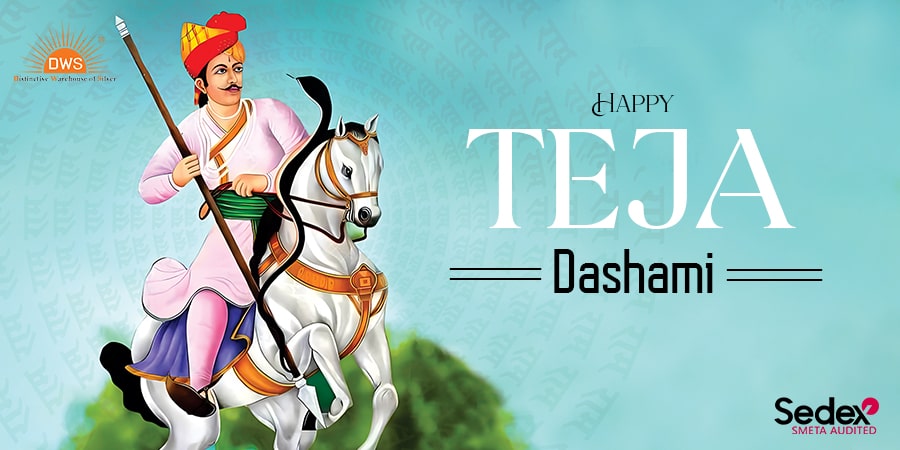
The Legend of Veer Tejaji
Veer Tejaji, believed to be a historical figure turned divine, is often depicted as a brave warrior who devoted his life to protecting the villagers and their livestock from threats, including ferocious wild animals and malevolent spirits. His most notable act of bravery came when he fought against a serpent that threatened the lives of villagers. According to local legends, Tejaji’s relationship with the serpent is what earned him the title of the Serpent God. This relationship is central to his story, as he is said to have used the powers granted by the serpent to protect the people, leading to the belief that he could control serpents and even communicate with them.
Tejaji’s tales are rich with themes of bravery and self-sacrifice. His commitment to the welfare of his community and his capacity to turn adversaries into allies highlights a unique dimension of his character—embracing both human and animal realms. Worship of Tejaji is prevalent among various communities, particularly among the Rajput and Banjara clans, where he is seen as a protector, a guardian spirit, and a symbol of courage.
The Significance of Teja Dashmi
Teja Dashmi, celebrated on the tenth day of the lunar month of Bhadrapada, marks the end of the Summer season in northern India. The festival is a vibrant celebration of Tejaji’s legacy, symbolizing the triumph of good over evil, and showcasing the communal spirit that binds together the devotees celebrating his deeds.
In many households, Teja Dashmi begins with the cleansing and decoration of homes, often adorned with colorful rangolis at the entrance, symbolizing welcome and prosperity. Worshippers prepare special offerings, including traditional sweets and local delicacies, to present at the shrine dedicated to Tejaji. Devotional songs—known as ‘Tejaji ke Bhajan’—filling the air with tales of his bravery, provide a spiritual ambiance that deepens the sense of connection to the divine.
As evening falls, communities gather for processions, led by decorated images or idols of Veer Tejaji. These vibrant parades reflect cultural heritage, encapsulating dance, music, and traditional attire that tell the stories of Tejaji’s life. During the festivities, worshippers often reenact the legend of Veer Tejaji's battles, engaging in folk dances that resemble the valorous acts he performed.
The Cultural Impact of Teja Dashmi
Teja Dashmi is not just a religious observance; it embodies the spirit of community resilience and harmony. The festival serves as an opportune moment for people from various walks of life to bond over shared beliefs and traditions. It fosters camaraderie among differing communities, fostering unity through a common reverence for Veer Tejaji.
The legend of Veer Tejaji has been a source of inspiration for countless artists, including storytellers, musicians, and dancers. The tales of Tejaji are not only passed down orally; they have found expression in regional literature, paintings, and performances, weaving a continuous narrative of cultural pride. Folk dramas and theatrical performances often depict his life, attracting substantial audiences and keeping the legacy alive through generations.
Conclusion: A Legacy of Protection and Devotion
As we observe Teja Dashmi, we are reminded of the profound impact of folklore in shaping our cultural landscapes. Veer Tejaji’s story is more than just a narrative; it is a reflection on community values, the reverence for nature, and the importance of courage and protection. The festival stands as a testament to the enduring legacy of this heroic figure, inspiring generations to uphold the virtues he personified.
Celebrating Teja Dashmi is an expression of love and devotion—a recognition of the intertwining of humanity and nature, where the spirit of a hero continues to echo through the hearts of millions. In sharing these rich traditions, we create a rich tapestry of collective identity and a shared sense of belonging, anchored in respect for the past while inspiring futures imbued with bravery and kindness.

Veer Tejaji (God of Snakes) - Teja Dashmi FAQs
Certainly! Below are some frequently asked questions (FAQs) about Veer Tejaji, also known as the God of Snakes, and the festival of Teja Dashmi.
1. Who is Veer Tejaji?
Veer Tejaji, also revered as Tejaji, is a folk deity in Rajasthan, India, recognized as a powerful protector of snakes and a god of valor. He is often depicted as a warrior riding a horse, with a strong connection to local folklore, particularly among the Rajput community.
2. What is the significance of Teja Dashmi?
Teja Dashmi, celebrated on the tenth day of the bright half of the lunar month of Bhadrapada, marks the day of Tejaji's worship. It is believed that on this day, Tejaji attained salvation. The celebration is significant for devotees as it seeks blessings for protection from snake bites and ensures the wellbeing of cattle.
3. How is Teja Dashmi celebrated?
Teja Dashmi is celebrated with fervor, including rituals such as:
- Processions: Communities organize processions with offerings, singing folk songs, and dancing.
- Puja and Offerings: Devotees perform pujas and offer items like milk, sweets, and flowers at temples dedicated to Tejaji.
- Bonfires: In some regions, bonfires are lit, representing purification and a means of warding off evil.
4. Why is Tejaji associated with snakes?
Tejaji is revered as a protector against snake bites, and many folklore stories depict him taming and befriending snakes. His connection with snakes is spiritually significant, symbolizing protection and blessings for local communities, especially those that rely on agriculture and livestock.
5. Are there any specific rituals performed during this day?
Yes, specific rituals include:
- Vrat (Fasting): Many devotees fast to honor Tejaji and seek his blessings.
- Recitation of Legends: Stories about Tejaji's bravery and miracles are recited, especially in gatherings.
- Anointing of Snakes: In some customs, live snakes are revered and anointed with milk, highlighting their sanctity in connection with Tejaji.
6. Where is Tejaji worshipped?
Tejaji is predominantly worshipped in Rajasthan, with many temples dedicated to him across the state. Some prominent temples include the ones in Khejarli, where there are significant shrines and places of pilgrimage related to Tejaji.
7. Is Teja Dashmi a public holiday?
While Teja Dashmi is not a national public holiday, it is widely recognized and celebrated by local communities in Rajasthan and surrounding regions.
8. What are some folk tales associated with Veer Tejaji?
Numerous folk tales depict Tejaji's valor, his encounters with snakes, and his heroic deeds. One famous story tells how he saved a village from snake attacks and gained the trust of villagers through his acts of bravery.
9. Can anyone participate in the celebrations?
Yes, Teja Dashmi celebrations are inclusive, and anyone, regardless of community or background, can participate in the rituals and festivities. It's a joyous occasion that fosters community spirit and reverence.
10. How can one learn more about Veer Tejaji and Teja Dashmi?
To learn more about Veer Tejaji and Teja Dashmi, individuals can:
- Visit local temples dedicated to Tejaji.
- Attend community celebrations.
- Explore regional literature, folk songs, and documentaries about Rajasthani folklore and culture.
- Engage with local historians or cultural organizations that focus on Rajasthan's heritage.
11. Why is Veer Tejaji worshipped?
Veer Tejaji is worshipped as a folk hero and a symbol of courage and valor in Rajasthan, India. Revered for his unwavering commitment to justice and protection of the oppressed, he is often celebrated in local lore as a protector of cattle and a champion of righteousness. His tales of bravery inspire devotion among his followers, who honor him through rituals and festivals.
12. What are the main festivals associated with Tejaji?
Tejaji, a revered folk hero in Rajasthan, is celebrated primarily during the Tejaji Mela, held annually in August. This festival honors his legacy as a protector of cattle and a symbol of bravery, featuring vibrant processions, folk songs, and local rituals. Another significant occasion is the Tejaji Jayanti, commemorating his birth with cultural performances and community gatherings that reflect local traditions and devotion.
13. Where are the major temples dedicated to Veer Tejaji located?
The major temples dedicated to Veer Tejaji, a revered folk deity in Rajasthan, are primarily located in the districts of Nagaur, Jaisalmer, and Ajmer. Notable temples include the Tejaji Temple in Bhivpur and the one in Sanchore, both of which attract numerous devotees, especially during religious festivals.
14. What are the beliefs and myths surrounding Veer Tejaji?
Veer Tejaji, a revered folk hero in Rajasthan, is celebrated for his valor and prowess in protecting livestock and fighting against injustice, particularly in the context of the Rajput warrior culture. Myths surrounding him include tales of his miraculous powers, such as bringing dead animals back to life and his unwavering devotion to the welfare of his people. Believers often attribute various miraculous events to his blessings, solidifying his status as a guardian deity revered by many, especially in rural communities.
15. How does Veer Tejaji relate to snake worship in India?
Veer Tejaji, a revered folk hero in Rajasthan, is often associated with snake worship due to his legendary prowess in protecting livestock from snakes and his deep connection with nature. His tales highlight the reverence for snakes in Indian culture, where they are considered both sacred and protective figures, leading to festivals and rituals that celebrate their significance. Tejaji's stories reflect the broader theme of coexistence with the serpent, underscoring the spiritual and ecological balance revered in traditional Indian beliefs.
16. What are the key messages of Teja Dashmi that followers emphasize?
Teja Dashmi, celebrated primarily in certain cultural contexts, emphasizes the importance of gratitude, reflection, and new beginnings. Followers often highlight themes of spiritual renewal, the celebration of light overcoming darkness, and the value of community and family bonds during this time of festivity.
These FAQs should provide an insightful overview of Veer Tejaji and the significance of Teja Dashmi for those interested in this revered figure and associated traditions.
Popular on Blogs
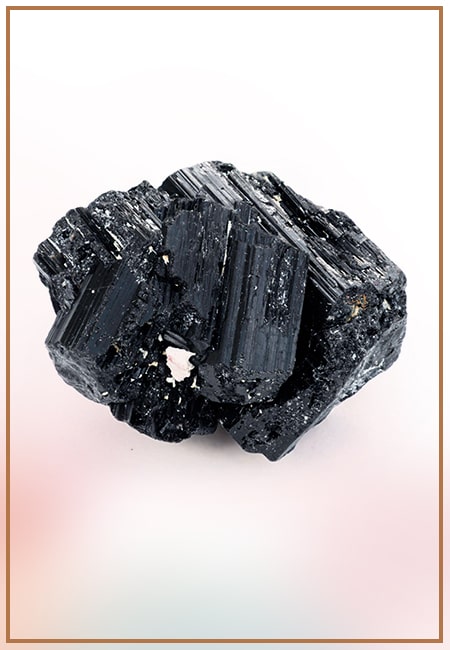
Black Tourmaline: Meaning, Healing Properties, Fascinating Facts, Powerful Attributes, Versatile Uses, and Beyond
September 05, 2023 / BY Team DWS
Black Tourmaline, also known as Schorl, is a highly revered crystal with incredible metaphysical properties. It derives its name from the Dutch word "turamali," meaning "stone with ..
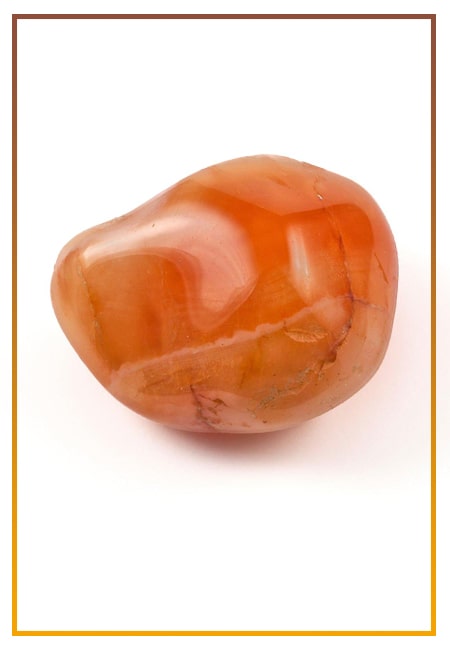
Carnelian Stone: Meaning, Healing Properties, Power, Facts, Color, Uses and More
December 26, 2023 / BY Team DWS
Carnelian is a vibrant and captivating gemstone that holds a plethora of meanings, healing properties, and powers. Its warm and fiery energy makes it a popular choice among crystal ..
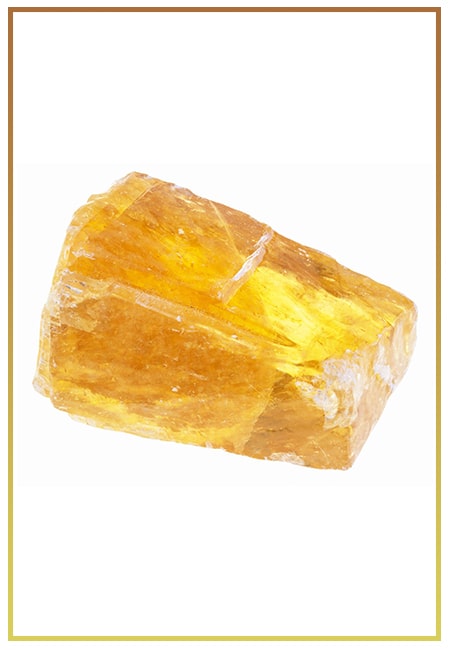
Citrine: Exploring its Meaning, Healing Properties, Fascinating Facts, Powers, Versatile Uses, and Much More
November 18, 2023 / BY Team DWS
Citrine, with its warm golden hues, has captured the attention and imagination of people for centuries. This beautiful gemstone, commonly associated with wealth and prosperity, hol ..

Black Onyx: Unveiling the Meaning, Healing Properties, Fascinating Facts, Powerful Attributes, Versatile Uses, and Beyond
July 25, 2023 / BY Team DWS
Black Onyx, a striking gemstone admired for its deep black hue and elegant appearance, has captivated people for centuries. In this comprehensive guide, we will delve into the mean ..
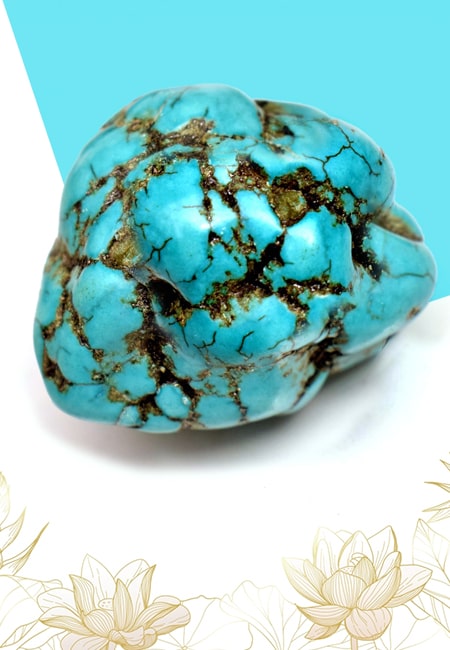
Unveiling the Mysteries of Turquoise Stone: Exploring its Meaning, Healing Properties, Power, Facts, Color, Uses, and More
December 05, 2023 / BY Team DWS
Turquoise, with its captivating blue-green hue, has been adorning jewelry and artifacts for centuries. This striking stone has a rich history, rich symbolism, and a plethora of int ..
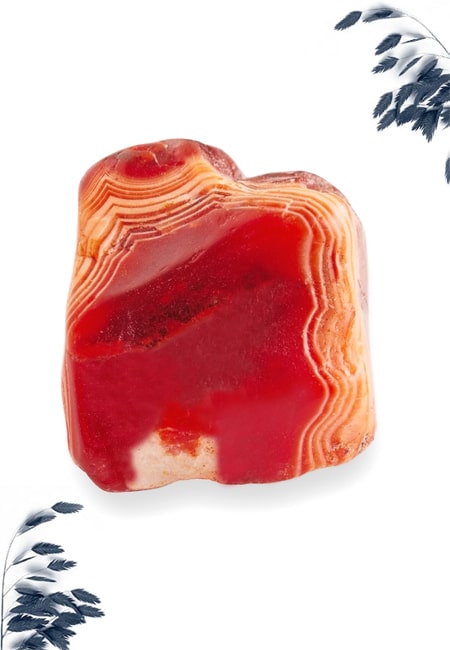
The History Behind The Popularity of Red Agate
December 23, 2022 / BY Team DWS
An Agate is a type of magma rock that takes many years till it is washed out naturally into the water. And that is the reason this stone has elements of water. This beautiful stone ..

Bloodstone: Unveiling the Meaning, Healing Properties, Facts, Powers, Uses, and More
August 21, 2023 / BY Team DWS
Bloodstone, with its captivating deep green color with specks of red, is a mesmerizing gemstone that has fascinated civilizations for centuries. It possesses unique healing propert ..

Plan a Perfect Valentine's Week with Our Valentine Week List 2025
January 22, 2024 / BY Team DWS
Valentine's Day is undoubtedly the most romantic day of the year, but we believe that one day is just not enough to express your love and make your partner feel special. That's why ..


